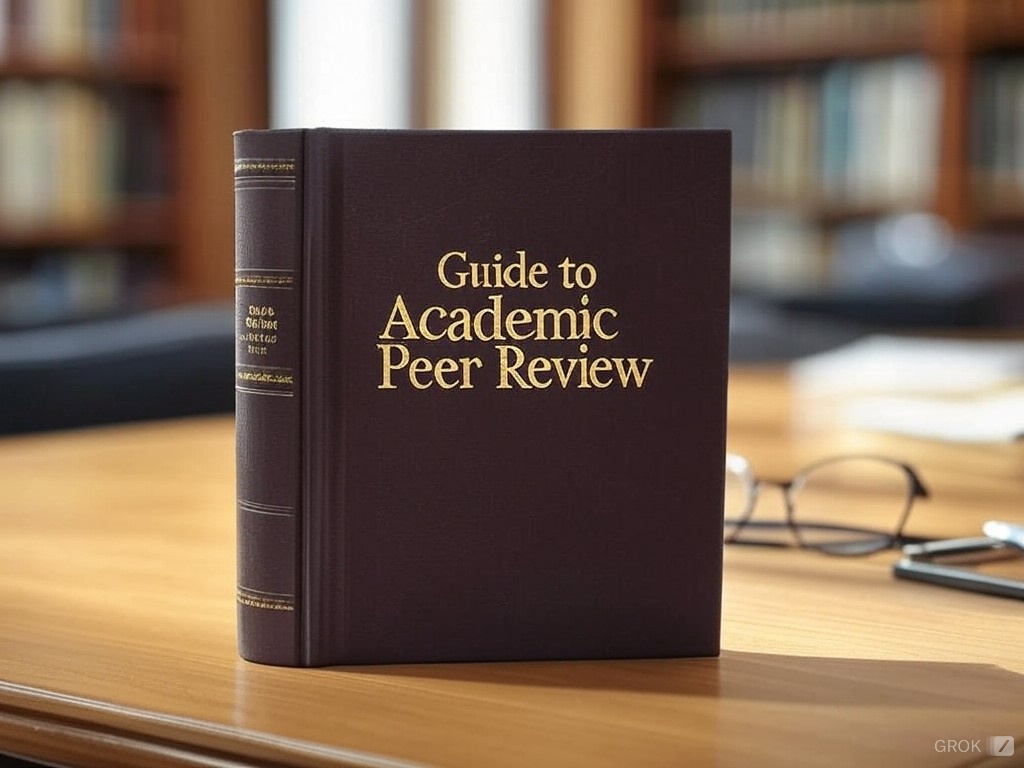Guide to Academic Peer Review: What to Expect and How to Respond

Guide to Academic Peer Review: What to Expect and How to Respond
The peer review process is a cornerstone of academic publishing, ensuring the quality and integrity of scholarly work. Whether you're submitting your first manuscript or responding to reviewer comments, understanding how to navigate peer review is essential for academic success.
This comprehensive guide will walk you through the peer review process, from initial submission to final acceptance, with practical strategies for addressing reviewer feedback effectively.
The typical peer review process includes:
- Initial submission and editorial screening
- Selection of peer reviewers
- Reviewer evaluation period
- Editorial decision
- Author revision process
- Final decision
Types of Peer Review
-
Single-Blind Review
- Reviewer identities hidden
- Author identities known
- Most common format
- Traditional approach
- Field-specific variations
-
Double-Blind Review
- All identities hidden
- Reduced bias potential
- Increased objectivity
- Author anonymization
- Citation considerations
-
Open Review
- Transparent process
- Public comments
- Visible identities
- Community engagement
- Ongoing dialogue
Common Types of Reviewer Feedback
-
Major Revisions
- Significant changes needed
- Methodological concerns
- Additional experiments required
- Substantial rewriting
- New analysis needed
-
Minor Revisions
- Clarity improvements
- Additional references
- Writing style adjustments
- Format corrections
- Data presentation updates
-
Technical Corrections
- Grammar and spelling
- Citation formatting
- Figure quality
- Statistical corrections
- Terminology consistency
Response Letter Example
Reviewer Comment: "The methodology section lacks detail about participant selection criteria."
Response: "Thank you for this observation. We have expanded the methodology section (pages 5-6) to include detailed participant selection criteria, including inclusion/exclusion parameters and recruitment procedures."
Changes Made: Added two paragraphs describing selection criteria and included a new table (Table 2) summarizing participant demographics.
Responding to Reviewer Comments
-
General Principles
- Be respectful and professional
- Address all comments
- Provide clear responses
- Document changes made
- Justify disagreements
-
Response Structure
- Point-by-point format
- Clear organization
- Specific page references
- Quoted text changes
- Supporting evidence
-
Strategic Approaches
- Prioritize major concerns
- Group similar comments
- Maintain positive tone
- Show appreciation
- Be thorough
Best Practices for Revision
-
Organization
- Track all changes
- Create revision plan
- Maintain version control
- Document decisions
- Review thoroughly
-
Communication
- Clear response letter
- Professional tone
- Complete explanations
- Timely submission
- Follow-up questions
-
Quality Control
- Check all changes
- Verify references
- Update figures/tables
- Proofread carefully
- Consistency review
- Ignoring reviewer comments
- Defensive or confrontational responses
- Incomplete documentation of changes
Frequently Asked Questions
Most journals expect revisions within 1-3 months. However, if major revisions are required, you may request additional time. The key is to communicate with the editor about your timeline and ensure your revisions are thorough rather than rushed.
Address each reviewer's comments separately and clearly explain your decisions. If there are contradictory suggestions, explain your reasoning for following one approach over another. The editor will make the final decision on how to proceed.
Yes, but do so respectfully and with strong supporting evidence. Explain why you disagree and provide references or data to support your position. Remember that the goal is to improve your paper, not to win an argument.
Other Articles You Might Like
AI Essay Writers: How Do They Work and Are They Worth Using?
A detailed exploration of AI essay technology, explaining the underlying mechanisms, comparing top tools, and providing guidance on when these systems offer genuine value.
The Role of AI in Shaping Essays on Leadership
Leadership is an age-old topic of exploration—an idea that has evolved over centuries, shaped by culture, history, and individuals who have had a significant impact on society. In the academic realm, the exploration of leadership is a core subject for students across a multitude of disciplines, from business to psychology. Today, with advancements in artificial intelligence (AI), academic writing has entered a new era. AI-powered writing assistants like Yomu.ai are transforming the way students and researchers approach essay writing, making it faster, more efficient, and more insightful. In this blog post, we delve into how AI, especially AI-driven academic tools like Yomu.ai, are revolutionizing the process of writing essays on leadership. We will explore effective strategies for crafting a leadership essay, examine how AI enhances the research and writing process, and provide valuable tips for students who are looking to improve their essays on leadership.
Free vs. Paid AI Writing Assistants: Are Premium Tools Worth It?
A comprehensive analysis of free and premium AI writing tools, examining their capabilities, limitations, and value propositions to help you decide if upgrading to paid services is worth the investment.
How to Write a Persuasive Essay: A Step-by-Step Guide
Writing a persuasive essay can be a fun and rewarding process, especially if you know how to tackle it step by step. Whether you're trying to convince people of your point of view or persuade them to take action, writing a well-organized persuasive essay is key to success. This guide will help you write a persuasive essay that catches the reader's attention and clearly gets your message across.
How AI Paper Writers Are Changing the Way Students Tackle Research Assignments
An in-depth exploration of how AI writing tools are transforming the student research process, from information gathering and synthesis to drafting and revision, with insights on both the opportunities and challenges for learning outcomes and academic integrity.
How to Email a Professor: Professional Communication Guide
Learn how to write clear, professional emails to professors with this comprehensive guide. Includes templates, examples, and best practices for effective academic communication.
